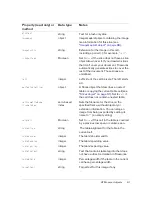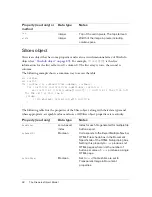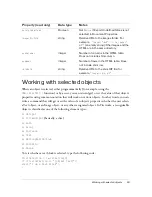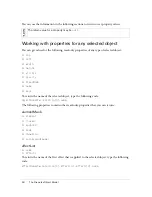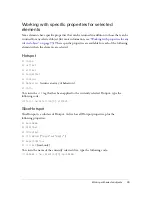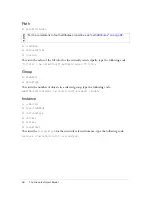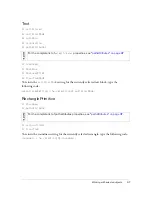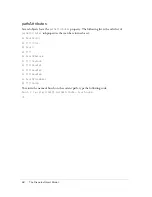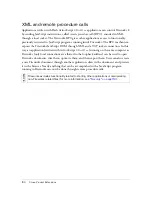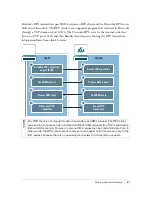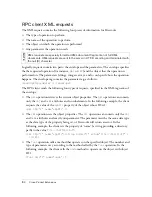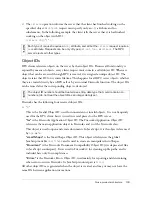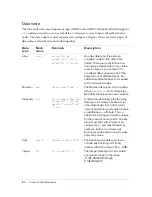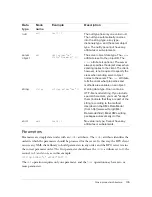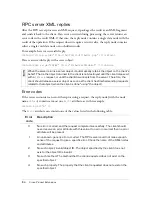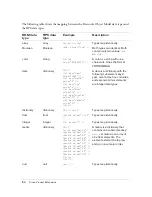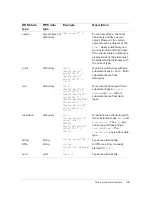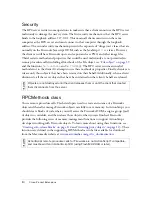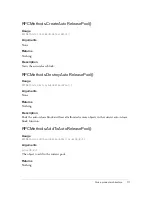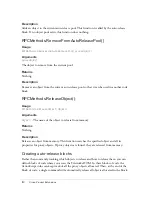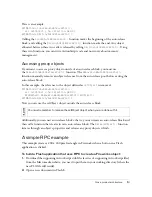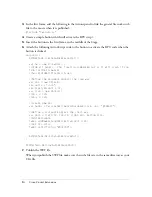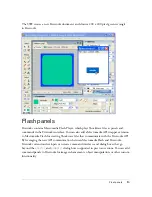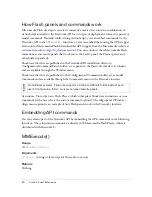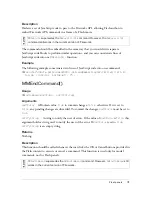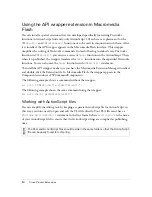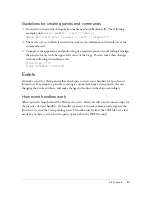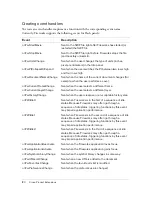
Cross-product architecture
105
Parameters
Parameters are simply data nodes with an
order
attribute. The
order
attribute identifies the
order in which the parameters should be processed for the server. In this way, the RPC client
can use any XML client library to build parameters in any order, and the RPC server retains
the correct parameter order. The first parameter should have the
order
attribute set to 0; the
second, to 1; and so on, as in this example:
<string order="1" value="bob" />
The
set
operation requires only one parameter, and the
func
operation may have zero or
more parameters.
null
null
<null />
The null type has only one value: null.
The null type automatically coerces
into the string type, array type,
dictionary type, and the server object
type. The null type cannot have any
attributes or sub-elements.
server
object
obj
<obj value="fw"
class="Fireworks" />
The server object data type. The
value
attribute is set to the object ID. The
class
attribute is optional. The server
always specifies the object class when
sending replies to the client. The client,
however, is not required to specify the
class when sending server object
nodes to the server. The
class
attribute
tells the client what properties and
methods are available on an object.
string
string
<string value="foo" />
A string data type. It can contain a
UTF-8-encoded string. If you include
special characters, you must “escape”
them (indicate that they are part of the
string) according to the method
described in the XML Data Model
(from http://www.w3.org/XML/
Datamodel.html). Most XML writing
packages automatically do this.
void
void
<void />
No value; no type. Cannot have any
attributes or subelements.
Data
type
Node
name
Example
Description
Summary of Contents for FIREWORKS 8-EXTENDING FIREWORKS
Page 1: ...Extending Fireworks ...
Page 4: ...4 Contents ...
Page 358: ...358 Fireworks JavaScript API ...
Page 372: ...372 Index ...

